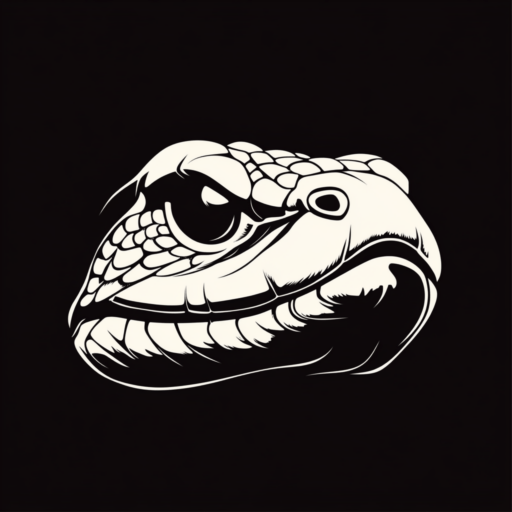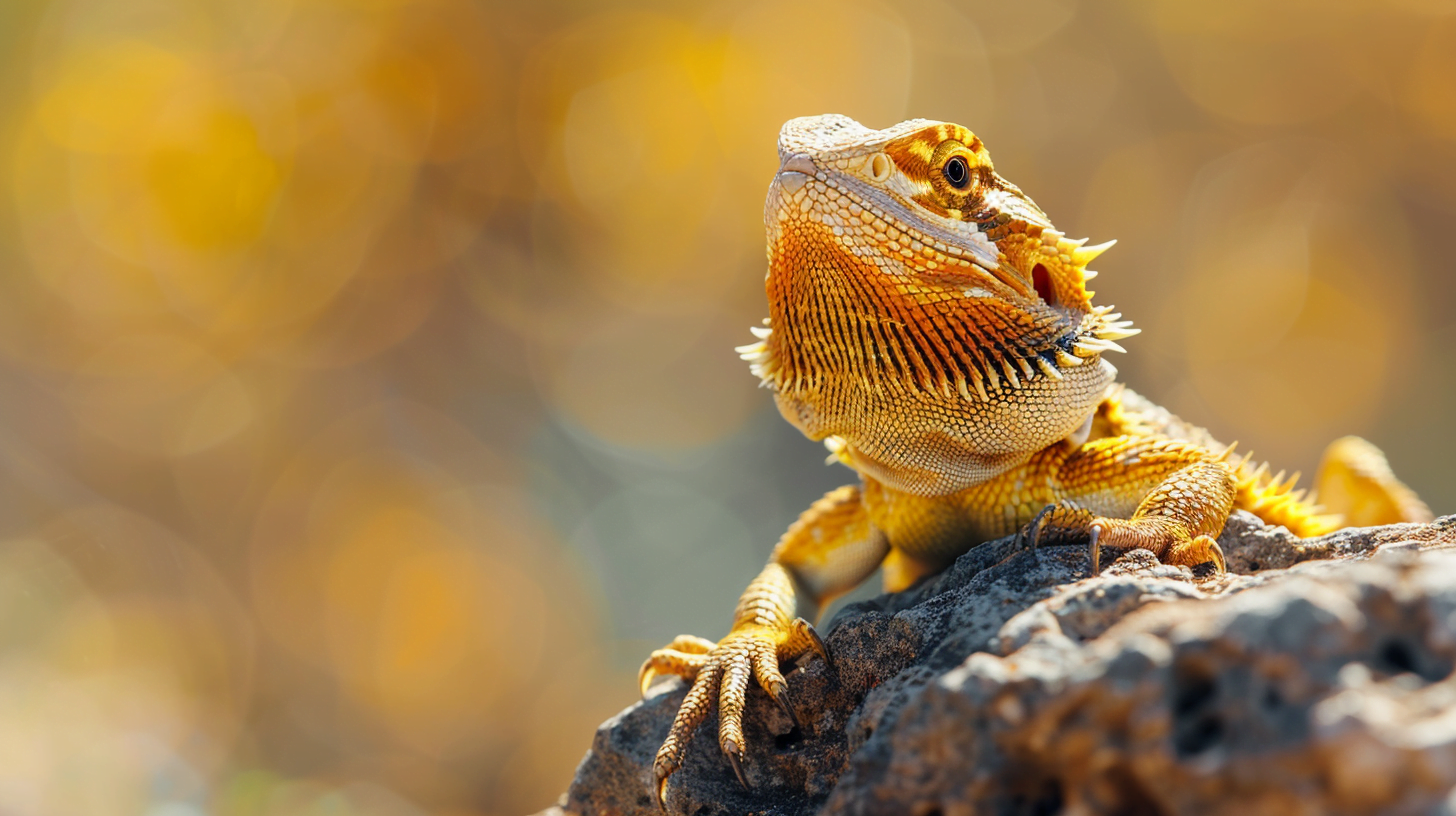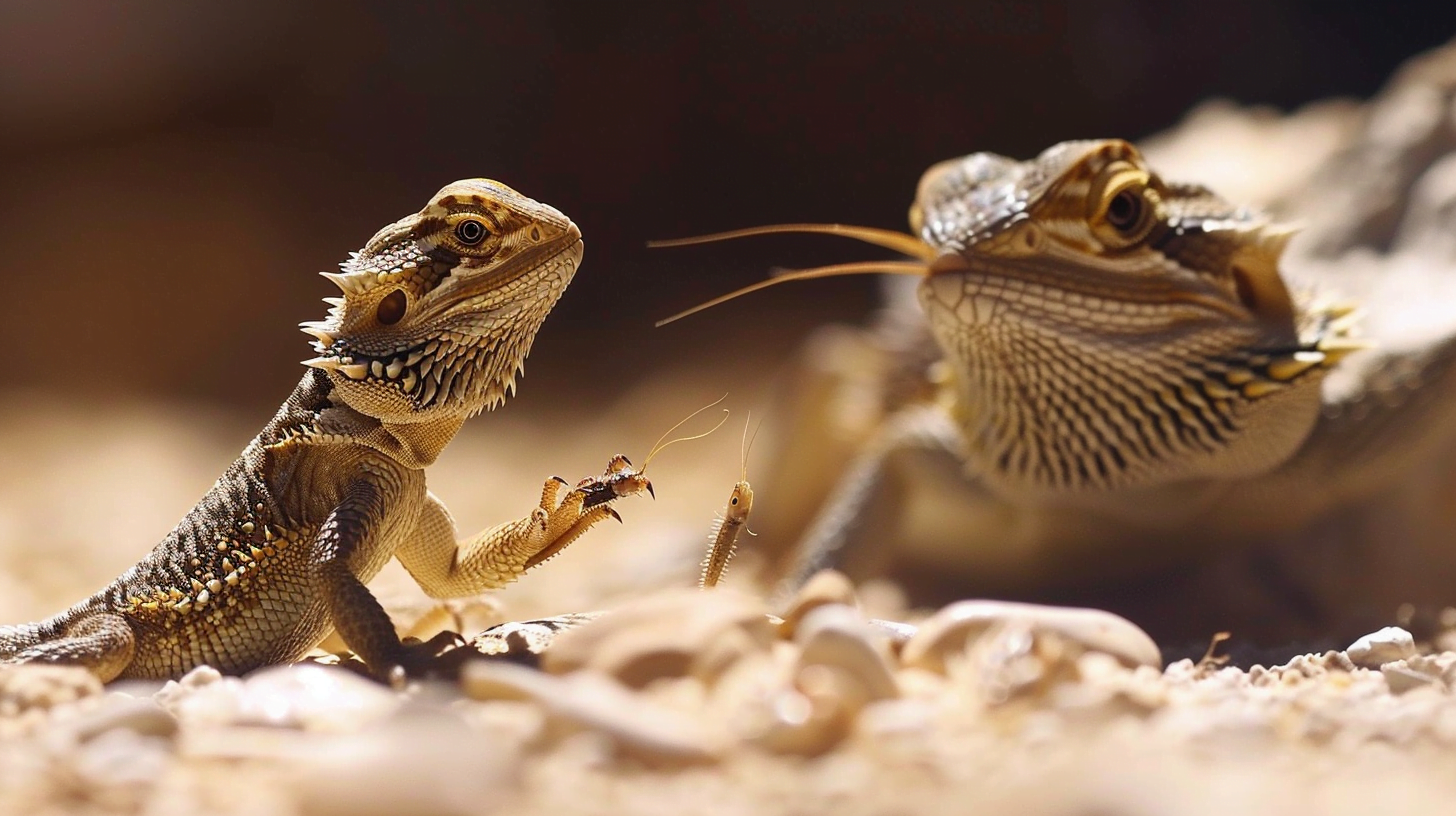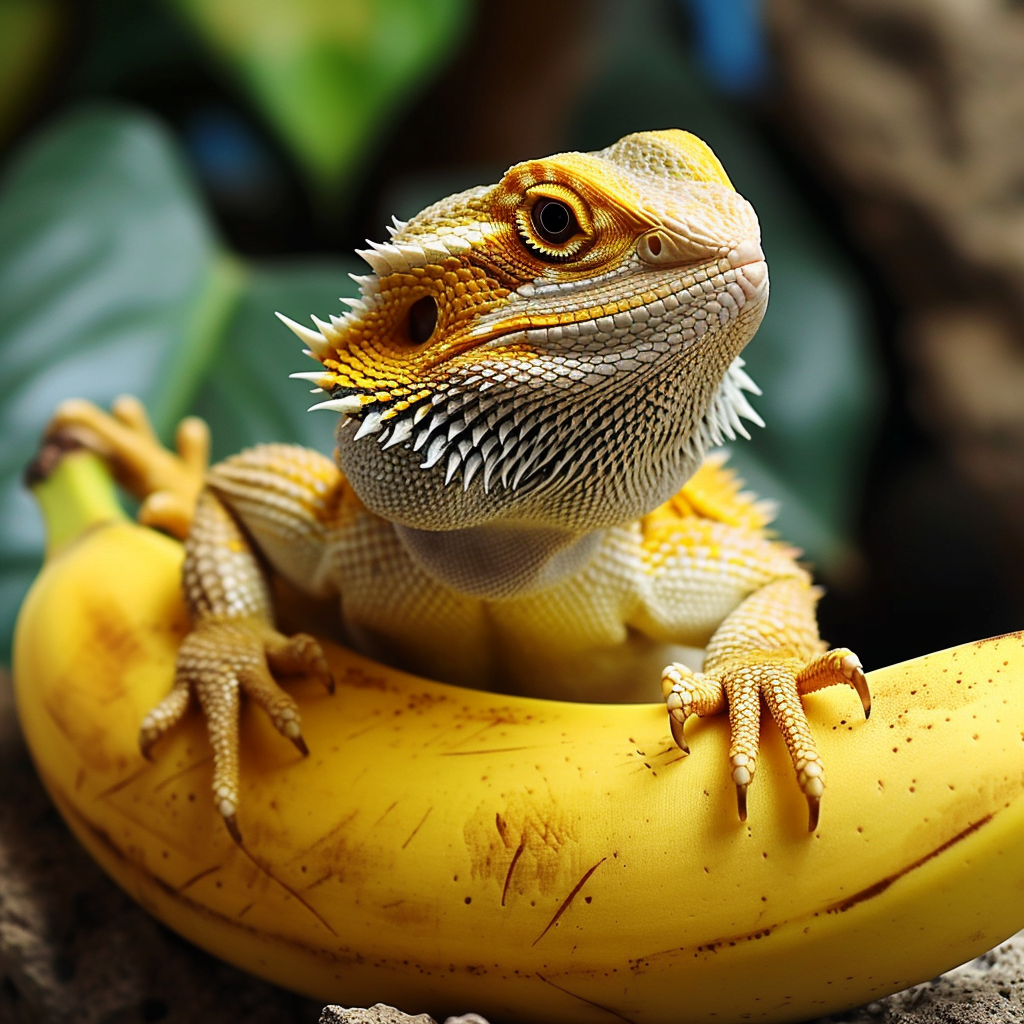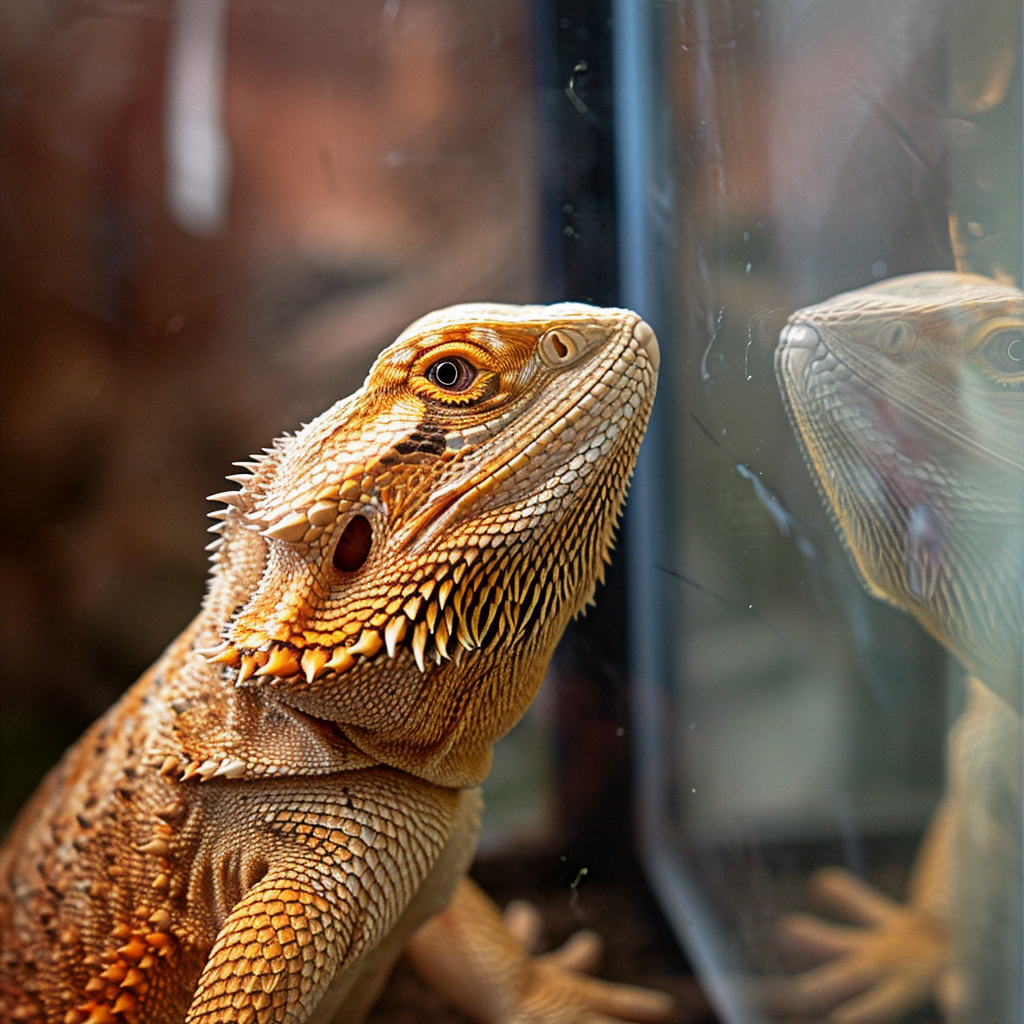Table of Contents
Can bearded dragons engage in cannibalistic behavior by feeding on each other? This article explores the intriguing question of whether bearded dragons, commonly kept as pets, have the capability to consume members of their own species. By examining the dietary habits and natural behaviors of bearded dragons, as well as investigating anecdotal evidence and scientific studies, we will delve into the fascinating world of these reptiles to uncover the truth behind this captivating phenomenon.

Can Bearded Dragons eat each other?
Bearded dragons, scientifically known as Pogona vitticeps, are a popular reptile species kept as pets worldwide. Known for their unique appearance and gentle temperament, these lizards are omnivores and generally consume a varied diet consisting of insects, vegetables, and fruits. However, the question arises: can bearded dragons eat each other? In this article, we will delve into the natural behavior of bearded dragons, the reasons for cannibalism, instances of cannibalistic tendencies in both the wild and captivity, the ideal diet for bearded dragons, signs of cannibalistic behavior, and ways to prevent cannibalism in captivity.
Natural Behavior of Bearded Dragons
Overview of Bearded Dragons
Bearded dragons are native to the arid regions of Australia and are known for their distinctive appearance characterized by a spiky throat “beard” and a flattened body shape. These lizards are diurnal in nature, meaning they are most active during the day. They have become popular pets due to their calm demeanor and relative ease of care.
Social Nature
Bearded dragons are solitary animals by nature, but they do exhibit social behavior, especially during their younger years. They may engage in interactions within their habitat and communicate through various visual cues, such as head bobbing or arm waving. However, as they grow older, bearded dragons often become less tolerant of their own species and may display aggressive behavior towards one another.
Hierarchy and Dominance
Within their social structure, bearded dragons establish a hierarchy based on dominance. Dominant individuals may exhibit territorial behavior and assert their dominance over other dragons through displays of aggression. This hierarchical structure plays a significant role in understanding the potential for cannibalistic tendencies among bearded dragons.
Territory and Competition
Bearded dragons are territorial animals, and they establish and defend their territories from intruders, especially during mating seasons. Within their territories, they compete for resources such as food, water, and potential mates. This competition and the need to establish dominance over their surroundings can contribute to aggressive behavior, including cannibalism under certain circumstances.
Reasons for Cannibalism
Scarcity of Resources
One reason for cannibalism among bearded dragons is the scarcity of resources. In their natural habitat, resources such as food or suitable shelter may be limited, prompting aggressive behaviors and potential cannibalism as a means of survival.
Habitat Enclosure
In captivity, the enclosure size and design can have a significant impact on the behavior of bearded dragons. Insufficient space or inadequate hiding spots may create a stressful environment, leading to aggression and potential cannibalistic tendencies.
Territorial Disputes
Bearded dragons may engage in territorial disputes with others of their species, particularly during mating seasons or when encountering unfamiliar individuals. These disputes can escalate to cannibalism if aggression reaches an extreme level.
Inadequate Feeding
A lack of suitable food sources or inadequate feeding practices can contribute to cannibalism in bearded dragons. When nutritional needs are not met, aggression and cannibalistic behaviors may arise as these lizards become desperate for sustenance.
Stress and Aggression
Stressful situations, such as overcrowding, improper handling, or environmental disturbances, can lead to heightened aggression and territorial behavior among bearded dragons. In extreme cases, this stress can manifest in cannibalistic tendencies.
Breeding Behavior
During the breeding season, male bearded dragons may display aggressive behavior towards females, which can potentially result in cannibalism. This behavior is believed to arise due to competition for mating opportunities and a means of establishing dominance.
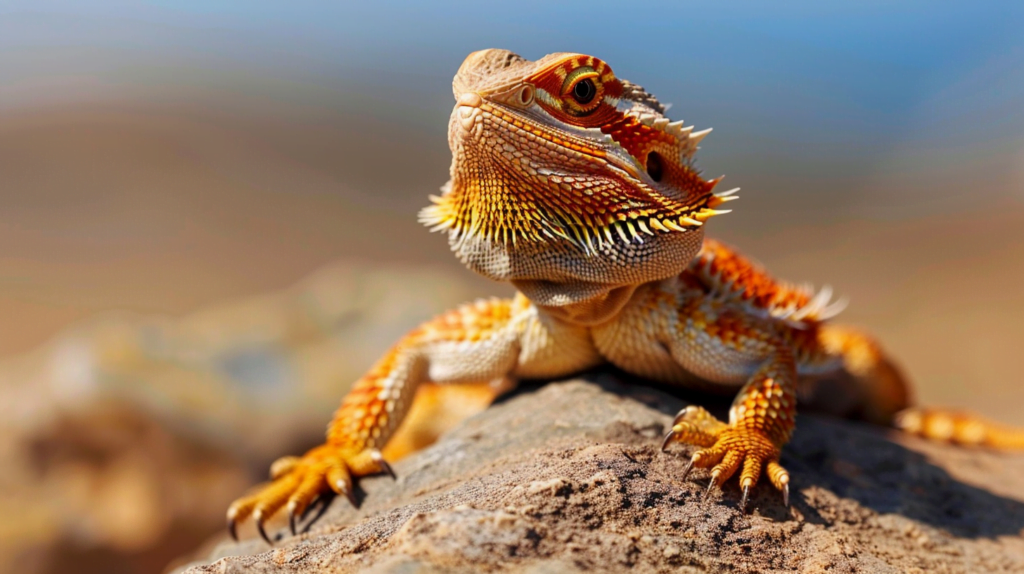
Cannibalistic Tendencies in the Wild
Observations in Natural Habitat
Cannibalism among bearded dragons has been observed in the wild, particularly during periods of food scarcity or territorial disputes. Adult bearded dragons have been known to prey on juveniles or even smaller adults for survival.
Survival Strategies
Cannibalism is a survival strategy that may be employed in the wild to ensure the survival of the fittest individuals. By consuming weaker or smaller members of their own species, bearded dragons can increase their chances of survival and reproductive success.
Predation on Juveniles
In the natural environment, juvenile bearded dragons are particularly vulnerable to predation not only from other reptiles but also from adults of their own species. Adult bearded dragons may view juveniles as potential competitors for resources, leading to cannibalistic behaviors.
Parental Cannibalism
Remarkably, bearded dragons also exhibit parental cannibalism, where adult females may consume their own offspring. This behavior, although seemingly counterintuitive, is believed to occur when resources are scarce or when the well-being of the mother becomes compromised.
Intraspecific Cannibalism
Intraspecific cannibalism, or cannibalism within the same species, has been observed in wild bearded dragon populations. This behavior is often a result of limited resources, competition, and territorial disputes among individuals.
Instances of Cannibalism in Captivity
Understanding Captive Environment
While bearded dragons are commonly kept as pets, captive environments can contribute to the manifestation of cannibalistic tendencies. Factors such as enclosure size, housing multiple individuals together, and improper feeding practices can all increase the likelihood of cannibalistic behavior.
Stress and Environmental Factors
Stress is a significant factor that can trigger aggressive behavior and cannibalism in captive bearded dragons. Overcrowding within an enclosure, exposure to excessive noise or disturbances, or even changes in temperature and lighting can cause stress and aggression among these reptiles.
Overcrowding in Enclosures
Keeping multiple bearded dragons in a confined space can lead to increased stress and aggression. Overcrowding limits the availability of resources, raising the likelihood of cannibalistic behavior as the lizards compete for food, water, and territory.
Compromised Nutrition
Inadequate nutrition can play a role in cannibalistic tendencies among captive bearded dragons. Poor-quality diets or inadequate feeding practices may result in malnourishment, leading these lizards to resort to cannibalism as a means of survival.
Insufficient Feeding Regimen
Failure to establish a proper feeding schedule and ensure that all bearded dragons receive adequate food can create an environment conducive to cannibalism. Weaker or smaller individuals may become targets for aggression and cannibalistic behavior if they are unable to obtain sufficient sustenance.
Accidental Injuries
Accidental injuries, such as fights or territorial disputes within the enclosure, can also lead to instances of cannibalism. Open wounds or impaired mobility make bearded dragons more vulnerable to attacks from their own kind, resulting in cannibalistic behavior.
Understanding Bearded Dragon Diet
Natural Diet in the Wild
Bearded dragons are omnivores, meaning they consume both animal and plant matter. In the wild, their diet primarily consists of insects, small vertebrates, flowers, fruits, and vegetation found in their arid habitats.
Omnivorous Feeding Behavior
As omnivores, bearded dragons have evolved to have a versatile feeding behavior. They are capable of capturing and consuming live prey, such as insects and small vertebrates, while also supplementing their diet with plant matter, including flowers, fruits, and leafy greens.
Nutritional Requirements
In order to maintain optimal health, it is important to provide bearded dragons with a balanced and nutritionally complete diet. They require a combination of proteins, vitamins, minerals, and carbohydrates to meet their nutritional needs and support their growth and overall well-being.
Food Options for Captive Bearded Dragons
Captive bearded dragons can be fed a variety of live insects, such as crickets, mealworms, and dubia roaches, which are readily available at pet stores. Additionally, they should be offered a selection of vegetables and fruits that provide essential vitamins and fiber to supplement their diet.
Ideal Diet for Bearded Dragons
Balanced Nutrition
A balanced diet is essential for the health and well-being of bearded dragons. Their diet should consist of a variety of protein sources, such as insects, as well as a wide range of vegetables and fruits to ensure they receive the necessary nutrients to thrive.
Feeder Insects
Live feeder insects are a crucial component of a bearded dragon’s diet. These can include crickets, mealworms, dubia roaches, and silkworms. Feeder insects should be properly gut-loaded and dusted with calcium and vitamin supplements to enhance their nutritional content.
Vegetable and Fruit Options
The vegetable component of a bearded dragon’s diet should include a variety of leafy greens, such as collard greens, kale, and dandelion greens. Other vegetables like butternut squash, bell peppers, and carrots can also be offered. Additionally, a small amount of fruit, such as berries or melons, can be provided as a treat.
Supplements and Calcium
To ensure that bearded dragons receive all the necessary vitamins and minerals, it is important to provide them with calcium and vitamin supplements. Calcium supplementation is particularly crucial for proper bone development and to prevent metabolic bone disease.
Feeding Schedule
Establishing a feeding schedule is important to prevent overfeeding or underfeeding. Juvenile bearded dragons generally require daily feedings, while adults can be fed every other day or three to four times a week. Feeding should be monitored to prevent aggression and territorial disputes over food resources.

Signs of Cannibalistic Behavior
Aggressive Posturing
One of the signs of cannibalistic behavior among bearded dragons is aggressive posturing. This can include puffing up their throat beards, gaping, head bobbing, or arm-waving as a means of intimidating their peers or asserting dominance.
Frequent Biting or Nipping
Frequent biting or nipping is another indicator of potential cannibalistic tendencies. Bearded dragons may engage in aggressive behavior towards each other, resulting in injuries or wounds, especially during territorial disputes or when competing for food.
Tail and Limb Loss
Tail and limb loss can occur as a result of aggression and cannibalism. Bearded dragons may attack and bite off the tails or limbs of weaker individuals, causing significant harm. Regrettably, these injuries may lead to infections and further complications if left untreated.
Enforced Isolation
Bearded dragons that exhibit cannibalistic behavior may require enforced isolation from others of their kind. Separating aggressive individuals can help prevent injuries and further instances of cannibalism, allowing each bearded dragon to recover and live in a stress-free environment.
Injuries and Wounds
Visible injuries and wounds, such as bite marks or open sores, can indicate cannibalistic behavior. These wounds require appropriate care and veterinary attention to prevent infections and ensure proper healing.
Refusal to Eat
In some instances, bearded dragons that engage in cannibalistic behavior may refuse to eat or exhibit a decreased appetite. This can be indicative of stress or underlying health issues brought about by aggression and cannibalism.

Preventing Cannibalism in Captivity
Adequate Enclosure Size
Providing bearded dragons with an adequate enclosure size is crucial to prevent crowding and territorial disputes. Each dragon should have sufficient space to establish their own territory, reducing the likelihood of aggressive behaviors, including cannibalism.
Separate Feeding Areas
To prevent aggression during feeding times, it is important to establish separate feeding areas within the enclosure. This ensures that each bearded dragon has access to their own food source, reducing competition and potential cannibalistic tendencies.
Monitoring Behavior and Interactions
Regularly monitoring the behavior and interactions of bearded dragons is essential in preventing cannibalism. Repeated aggressive behavior towards other dragons or signs of distress should be addressed promptly to mitigate further aggression and potential harm.
Introduce Enrichment Activities
Enrichment activities can help alleviate stress and provide mental stimulation for bearded dragons. The addition of climbing structures, hiding spots, and other environmental enhancements can promote natural behaviors, reduce aggression, and prevent cannibalistic tendencies.
Appropriate Feeding and Supplementation
Ensuring an appropriate feeding regimen and providing necessary supplementation is crucial to prevent cannibalism in captivity. A well-balanced diet that meets the nutritional needs of bearded dragons can help alleviate aggression and potential cannibalistic behavior.
Regular Veterinary Checks
Regular veterinary checks for bearded dragons are essential to monitor their overall health and address any potential underlying health issues. A thorough examination can help detect signs of stress, malnourishment, or injuries that may contribute to cannibalistic behavior.

Separating Aggressive Bearded Dragons
Identifying Aggressive Behavior
Identifying aggressive behavior among bearded dragons is crucial to prevent further instances of cannibalism. Prolonged aggressive posturing, persistent biting, or inflicting injuries on other individuals are indicators that a bearded dragon may be consistently aggressive and should be separated.
Rehousing Aggressive Individuals
Once aggressive behavior is identified, rehousing aggressive individuals in separate enclosures is necessary to prevent harm to themselves or other bearded dragons. Adequate space and conditions should be provided to ensure their well-being and reduce stress levels.
Providing Individual Care
When housing aggressive bearded dragons separately, individual care must be provided to monitor their health, behavior, and well-being. This includes adhering to appropriate feeding regimens, ensuring they receive regular veterinary checks, and providing enrichment activities to reduce stress levels.
Reintroduction Attempts
Reintroduction of previously aggressive bearded dragons should only be attempted when it is considered safe and appropriate. Careful observation of their behavior, gradual reintroduction, and monitoring during this process can help determine their compatibility and prevent further instances of cannibalistic behavior.
In summary, while cannibalism is a natural behavior observed among bearded dragons, it is not a common occurrence. Understanding the reasons that contribute to cannibalistic tendencies, ensuring a proper and nutritious diet, monitoring behavior and interactions, and providing a suitable living environment are all vital in preventing cannibalism in captivity. By prioritizing the welfare and health of these remarkable reptiles, we can ensure their well-being and enjoyment as pets for many years to come.
